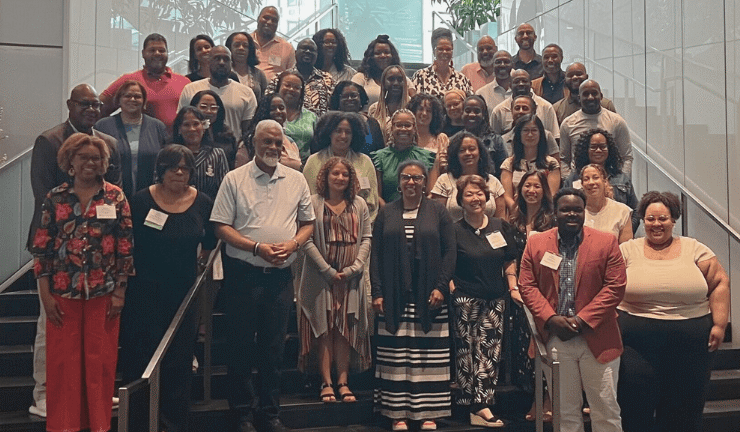Coaching Insights to Build Effective Teams

Lessons From the Water
Get out of your office. As the head coach of rowing at George Washington University, I coached from a flimsy 16-foot aluminum boat, working the motor’s throttle with my left hand and yelling instructions through the megaphone in my right hand. I couldn’t coach from the boathouse or from the shore. I had to be on the water, alongside my crews, to be effective and give advice to the individual rowers on how to improve their technique. In cold or inclement weather, I suffered along with my rowers. The unspoken message to my team was, “We’re in this together.”
If a rowing coach needs to be in a boat to be most effective, school leaders need to be out and about in their communities—they can’t lead well from their office or by sending inspirational emails. In my work as a search consultant for senior administrators of independent and international schools for the past 14 years, I always ask candidates about their leadership style. In answering this question, a head once shared that she had given up her office because the school needed it for a classroom. “What do I need an office for? I have my phone and iPad, and my PA can always reach me if there’s an emergency.” It enabled her to be visible on campus and to work alongside staff, administrators, faculty, and students more, which helped her become a more effective school leader.
For those heads who do have an office, I’m a big advocate of what I call the “closed door policy”—closing the door to your office to get out and spend as much time as possible visiting teachers, staff, and students on their turf, showing interest in their work, hanging out on the playground, watching drama practice, eating in the cafeteria, watching a soccer game. Good leadership, like coaching, comes from face-to-face communication and building relationships, not via emails or memos. Being out and about also affords the head opportunities to listen to concerns and have conversations about issues that might otherwise fester.
Work with the team you have. As a rowing coach, my goal was to fill all the seats in the boat—you can’t race an eight-oared shell with only six or seven rowers. While I would have liked to have hand-picked my team from a pool of experienced, Olympic-sized athletes, my reality was much different: Each year I’d get a small group of eager rowers of all shapes and sizes with the spirit and willingness to work hard on a freezing river at 6 in the morning. It was my role to teach them to become the skilled rowers they aspired to be.
Similarly, a new head of school inherits a faculty, and, if changes need to be made, they won’t usually happen for quite some time. Leaders need to take time to assess the situation, and embracing author Jim Collins’ well-known exhortation to “get the right people on the bus” misses the mark. I suggest that school leaders first focus on getting the maximum from those who are already “in the boat”—show interest in their work, applaud them for their efforts, and coach them to be the best they can be.
In rowing, no individual is more important than another. To build a strong crew, there must be respect for the contribution of rower. Likewise, it is up to school leaders to discover and nourish each staff member’s talent, to know what’s going on in classrooms and give credit where it’s due. This leader stands a better chance of achieving a greater degree of teamwork that ultimately moves the school to a higher level of excellence.
Earn their trust. Rowing is the only sport in which athletes compete with their backs to the finish line. As a result, a lot of trust is required: trust that the other rowers are pulling as hard and trust that the coach’s guidance will make the boat move faster toward the finish line. A great coach can shape a great team. However, building a great team begins with getting to know rowers as individuals, acknowledging their strengths and dedication, and building trust that allows the coach to help individual and team performance. Great teams and great schools have a solid esprit de corps.
Like the coach of a motivated team, school leaders respect and value the contributions of every member of the school community. They believe in everyone’s potential to do even better, and their goal must be to earn the staff’s trust to help them meet the common goal of making the good school better. Like a good coach, a school leader must inspire staff members to work for the good of something greater than their individual selves by focusing on the school’s mission and its students.
A great school is rooted in the spirit of community and teamwork, and is driven by the respect among students, teachers, and administrators. It is as much the challenges we overcome as the opportunities we are given that bring us together as a team. School leaders must intentionally focus on the positive, celebrate accomplishments, and applaud great effort.
“Thanks, Coach!” are the most rewarding words I’ve ever heard—an expression of gratitude and a recognition that I had taught the athletes not only about the skills of the sport but also something about themselves. I hope that every education leader hears a similar sentiment frequently from colleagues, students, parents, and board members.








